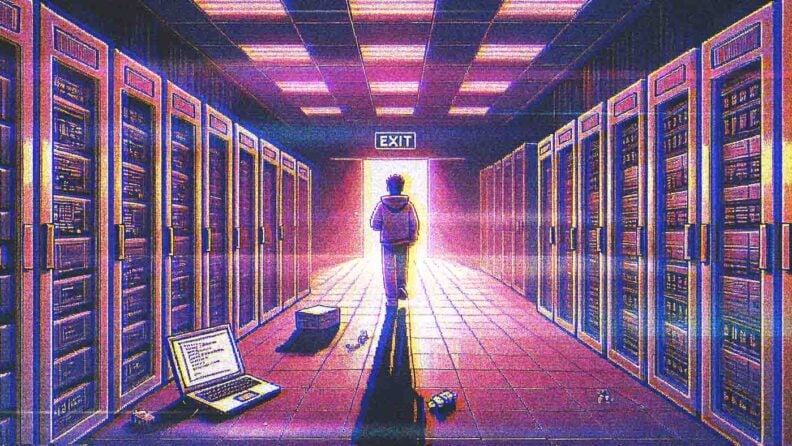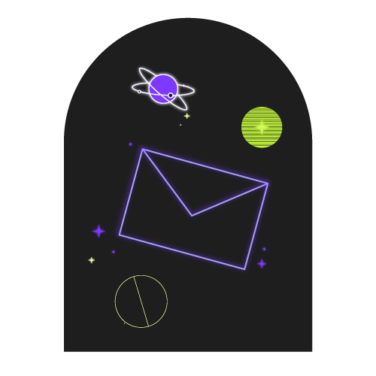Meet Mohammed. He has been with the same company for over two decades. He’s the go-to for everything: legacy systems, obscure patches, and emergency fixes no one else can decode.
He just announced his retirement. The team is planning a celebration. Yay, cake!
But now, a few weeks have passed, and the impact has started to hit. A routine update failed. No one could recall why the firewall was configured that way, and the new hire, bright and capable, is lost without context. Because you can’t pass down 20 years of technical intuition in a two-week handoff.
Mohammed didn’t just retire. He took an entire institutional memory with him. This isn’t a one-off story. It’s a slow-motion crisis playing out in tech teams everywhere.
Do you have a framework in place to capture tribal knowledge before it walks out the door forever?
The Retirement Cliff is Real—and Fast Approaching
According to Auvik’s 2025 IT Trends Report, 23% of Baby Boomer IT professionals are working 50+ hour weeks—many of them carrying deeply technical institutional knowledge that is undocumented, tribal, and irreplaceable.
These are your senior engineers, your systems architects, your one-person support encyclopedias. And most of them are nearing retirement. Quietly.
Auvik's report reveals another ticking time bomb: 60% of IT professionals are experiencing some degree of burnout. Add that to the retirement wave, and you’ve got a dual-threat scenario:
- Seasoned professionals leaving for good,
- Mid-career engineers mentally checking out
Now there's a field increasingly filled with overburdened generalists left holding the bag.
These professionals are nearing retirement, and they’re not being replaced nearly fast enough. According to the U.S. Bureau of Labor Statistics, an estimated 356,700 IT job openings will need to be filled each year between 2023 and 2033, driven by job growth and the need to replace retiring or exiting workers.
This paints a stark picture: as the most experienced engineers step away, we’re not just seeing knowledge loss; we’re facing a systemic talent shortage.
The pressure is on for tech leaders to preserve what they already have and build the next generation of engineers amid a shrinking supply.
The trend aligns with broader workforce projections. By 2030, 100% of Baby Boomers will have reached retirement age, meaning this “cliff” will become a full-on sinkhole unless organizations act now.
Why is This a CTO’s Problem (Not Just HR’s)?
It's tempting to treat this as a People Ops issue—file it under succession planning and call it a day.
But when a senior engineer walks, it’s not just a seat you need to fill. It’s decisions, logic, shortcuts, history, risk assessments, and the ability to prevent failure.
According to Harvard Business Review, one organization expecting 700 retirements estimated they were about to lose over 27,000 years of cumulative experience. Imagine trying to backfill that with a job posting.
This is not just about staffing. It’s about infrastructure resiliency, operational safety, and long-term velocity.
Burnout is Hitting Hard (and Quietly)
While retirement is often predictable, burnout is the silent killer.
- A 2023 CIO.com report found that 65% of engineers experienced burnout in the past year alone.
- Burnout is also expensive: Gallup estimates it costs companies between $3,999 and $20,683 per disengaged employee annually, depending on seniority and role.
For tech leaders, this translates into unreliable systems, dropped projects, delayed launches, and team instability—all of which threaten business performance far more than a late sprint.
The Retirement Cliff Poll
Build a Framework to Capture Institutional Knowledge
So, how do you stop legacy knowledge from disappearing overnight? Check out our 5-step framework that you can implement today:
1. Map
Identify critical knowledge holders and vulnerable systems.
- Ask: “If [Name] left tomorrow, what would we lose?”
- Use a risk matrix to prioritize: Impact × Likelihood.
2. Tag
Clarify what actually needs to be preserved:
- Tribal knowledge (undocumented systems and fixes)
- Decision history (why certain paths were taken)
- Key relationships (who they go to when things break)
3. Transfer
Create structured mentorship and pairing programs:
- Cross-train team members
- Shadow senior engineers during major ops
- Rotate support responsibilities strategically
A Gartner survey from May 2024 of 3,375 employees found that 60% reported not receiving the on-the-job coaching or training needed to develop core skills.
Without this mentorship and hands-on experience, organizations risk not only losing their most experienced staff but also failing to build the next generation of technical leaders.
4. Store
Use tools your team will actually engage with.
- Document in wikis, not Word docs
- Make it searchable, version-controlled, and reviewed quarterly
- Normalize internal demos and teach-backs
5. Activate
Knowledge isn’t useful if it’s buried.
- Build it into onboarding
- Run drills where legacy knowledge is tested
- Turn documentation into live training material
You Have Documentation, But You Don’t Use It
That's silly.
Documentation sitting in a Confluence graveyard doesn’t count.
I think teams assume “we’re covered” because something exists in a folder. But that content is almost always outdated, untested, and invisible to new hires under pressure.
To make documentation actionable:
- Conduct brown-bag sessions led by senior engineers: Use recurring lunch-and-learns to walk through legacy systems, past decisions, and infrastructure context.
- Hold teach-backs during onboarding: Have new team members explain back what they’ve learned from docs, so gaps and assumptions are exposed early.
- Host incident retrospectives that highlight tribal knowledge gaps: After outages or urgent fixes, identify where legacy knowledge made or broke the response.
Think of documentation like infrastructure. If it’s not maintained, it breaks—usually when you need it most.
This isn’t just a write-it-down problem. It’s a use-it-so-it-sticks problem.
Expert Advice
John Astorino, Chief Operating Officer at Auvik, has seen firsthand how invisible the retirement risk can be—until it’s too late.
“Baby Boomer IT pros not only have decades of systems and infrastructure knowledge, but they also know older systems that newer employees would have never encountered or learned about. They tend to work longer hours, thus also compensating for resource gaps. This will leave a large knowledge gap and derail ongoing projects if a continuity plan is not in place before these pros retire.”
Astorino encourages CTOs to:
- Develop a longer-term plan that ensures the right level of resourcing, job flexibility, and knowledge sharing, as it is better for both employees and the organization—a win-win.
- Make mentorship and knowledge sharing part of the culture by formalizing a mentorship program.
- Reward leaders and employees who embrace the mentorship program and demonstrate that knowledge transfer is taking place.
- Acknowledge that burnout is a real issue that impacts IT professionals and their families, and address it proactively.
Take Action This Week
Here’s where to start:
- Audit your team: Who holds undocumented system knowledge? Who’s nearing burnout or retirement?
- Schedule a 1:1: Partner with HR to identify phased retirement options, burnout recovery programs, or early mentorship opportunities.
- Build a live doc: Share this 5-step framework with your tech leads. Pick one system, one person, and start today.
- Run a knowledge risk drill: Simulate what happens if one critical engineer walks. What breaks? What’s missing?
- Start now: Preserve legacy while it’s still a conversation, not a crisis.
You can’t wait until someone gives notice to begin succession planning. The goal isn’t just replacing people; it’s retaining what they know.
Cake is the Victory Lap!
When your most experienced engineer walks out the door, the cake should be the victory lap—a celebration that marks the successful transfer of deep institutional knowledge.
You wouldn’t let a critical vendor exit your business without a backup plan. So why do we treat our own people like they’re replaceable?
This is your reminder: People aren’t just contributors. They’re architects of continuity if we let them be.
Subscribe to The CTO Club's newsletter for more IT stories, insights, and tools.




